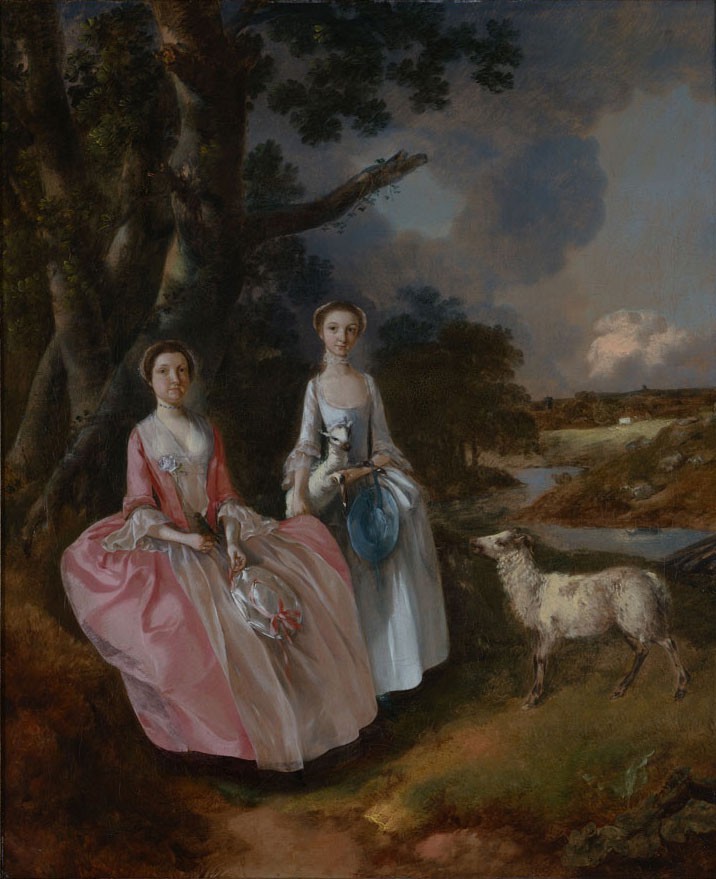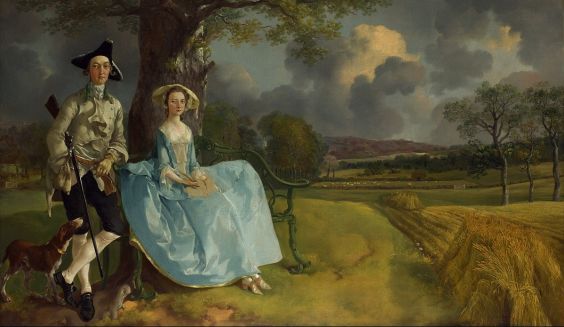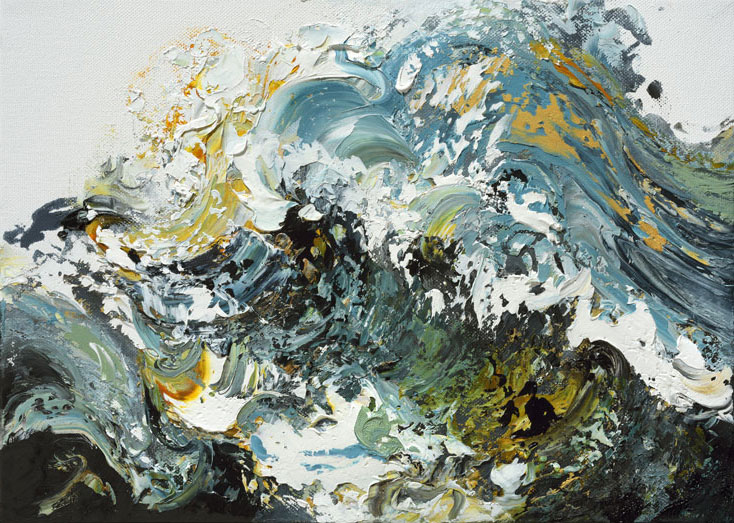Thomas Gainsborough’s pictures deserve to be hung properly. This was an issue he felt so strongly about that he twice withdrew from exhibiting at the Royal Academy because of the unfavourable way the hanging committee was displaying his works. Gainsborough’s abstentions were serious matters – he was one of the Academy’s founding members and one of its most acclaimed exhibitors, having skilfully exploited the public exposure offered at the annual exhibition to cement his position as one of the leading portraitists of the age.
Today the problem of how to properly display his paintings is a pressing issue for Gainsborough’s House, a museum in the Suffolk market town of Sudbury dedicated to the artist’s life and work. This fine Georgian townhouse was where the artist was born in 1727 and where he spent his childhood. After passing through various private hands, the building was acquired as a ‘national monument’ to Gainsborough in 1958 and opened to the public three years later. Since then the museum has accumulated the largest collection of Gainsboroughs in the world, but in doing so has outgrown its home. There is limited space for exhibition, education and visitor facilities in the historic house. Moreover, the domestic interiors are inadequate for displaying the full-length exhibition portraits that were so crucial to Gainsborough’s professional success, and these now languish in the museum’s stores.

Mrs Mary Cobbold with her Daughter Anne in a Landscape with a Lamb and a Ewe (c. 1752), Thomas Gainsborough. Courtesy Gainsborough’s House
The museum has recently been presented with an opportunity to change all this. A neighbouring site has become available on which it plans to build a generous suite of modern galleries. In this new building the museum will be able to display a much larger selection from its collection, in conditions that will show the works to best effect. The proposed building will also boast the largest exhibition space in Suffolk, providing a venue for loan exhibitions, plus a contemporary art gallery. The historic Gainsborough home will no longer have to endure the indignities of its multi-purpose uses and overcrowded hang, and with sympathetic refurbishment will be restored to its Georgian elegance.
The overall vision is no less than to create a national museum to Thomas Gainsborough in Sudbury. Such grand designs do not come cheaply – the project has been costed at £7 million. Lead funding has already been secured from a number of charitable trusts, but the viability of the scheme will ultimately depend on the generosity of the Heritage Lottery Fund and match donors.
A question that will inevitably be raised is whether a small market town in Suffolk is the right place for a museum of this scale and cost. Gainsborough’s House gets no direct public support and will have to meet all of the increased running and maintenance costs from its own resources. Bigger and better facilities will enable the museum to attract more visitors and earn more revenue, but visitor numbers are always likely to be modest in this quiet corner of East Anglia. And there is a limit to how much income can be generated from tickets and tea shops. To put its finances on a more sustainable footing, the museum is also seeking to raise a further £1 million towards an endowment, a strategy that an increasing number of museums are turning to in these difficult times.
But funders should be looking beyond the business case and also taking into account the wider benefits the expanded museum would bring to Sudbury. The museum is keen to emphasise the contribution the project can make to the regeneration of the town, by attracting tourists, providing a vibrant cultural venue and a place for community participation, as well as being a source of civic pride. It is all too easy these days to see regional museums as financial liabilities and to discount the social and economic benefits they can bring to their communities.

Mr and Mrs Andrews (c. 1750), Thomas Gainsborough. Photo: National Gallery/Wikimedia Commons (used under public domain licence)
A sense of place and of being connected to the town and the wider landscape are important aspects of the project. On the upper floor of the proposed building will be a landscape gallery and learning studio giving panoramic views of the surrounding countryside over the rooftops of Sudbury. From here visitors will be able to look out towards the viewpoint of the town depicted in probably Gainsborough’s best-known painting, Mr and Mrs Andrews (c. 1750; National Gallery).
The museum’s fundraising has recently been given a boost by a gift from another renowned artist and native of Sudbury, Maggi Hambling. Hambling has donated one of her great wave paintings, Sun on breaking summer wave (2015), to be raffled by NADFAS (the National Association of Decorative & Fine Arts Societies) for the benefit of the campaign. She remembers the inspiration she took as a child visiting Gainsborough’s House: ‘…the experience of seeing great painting for the first time remains with me to this day. I couldn’t believe that cows or clouds, woods or dogs, trees and land could be made so real with paint…this childhood encounter was exciting and mysterious’.

Sun On Breaking Summer Wave (2015), Maggi Hambling
Gainsborough’s House wants to make this sort of encounter available to the next generation of Sudburians and to greater numbers of visitors from further afield. Rightly, it is the art of Gainsborough, and how it should be presented, appreciated and enjoyed that is central to these plans. This is something of which the artist would surely have approved.
The Gainsborough’s House fundraising campaign has been developed with NADFAS. Tickets to enter the prize draw are available at £20 each from www.nadfas.org.uk or in person from Gainsborough’s House.

Ambitious plans for Gainsborough’s birthplace
Share
Thomas Gainsborough’s pictures deserve to be hung properly. This was an issue he felt so strongly about that he twice withdrew from exhibiting at the Royal Academy because of the unfavourable way the hanging committee was displaying his works. Gainsborough’s abstentions were serious matters – he was one of the Academy’s founding members and one of its most acclaimed exhibitors, having skilfully exploited the public exposure offered at the annual exhibition to cement his position as one of the leading portraitists of the age.
Today the problem of how to properly display his paintings is a pressing issue for Gainsborough’s House, a museum in the Suffolk market town of Sudbury dedicated to the artist’s life and work. This fine Georgian townhouse was where the artist was born in 1727 and where he spent his childhood. After passing through various private hands, the building was acquired as a ‘national monument’ to Gainsborough in 1958 and opened to the public three years later. Since then the museum has accumulated the largest collection of Gainsboroughs in the world, but in doing so has outgrown its home. There is limited space for exhibition, education and visitor facilities in the historic house. Moreover, the domestic interiors are inadequate for displaying the full-length exhibition portraits that were so crucial to Gainsborough’s professional success, and these now languish in the museum’s stores.
Mrs Mary Cobbold with her Daughter Anne in a Landscape with a Lamb and a Ewe (c. 1752), Thomas Gainsborough. Courtesy Gainsborough’s House
The museum has recently been presented with an opportunity to change all this. A neighbouring site has become available on which it plans to build a generous suite of modern galleries. In this new building the museum will be able to display a much larger selection from its collection, in conditions that will show the works to best effect. The proposed building will also boast the largest exhibition space in Suffolk, providing a venue for loan exhibitions, plus a contemporary art gallery. The historic Gainsborough home will no longer have to endure the indignities of its multi-purpose uses and overcrowded hang, and with sympathetic refurbishment will be restored to its Georgian elegance.
The overall vision is no less than to create a national museum to Thomas Gainsborough in Sudbury. Such grand designs do not come cheaply – the project has been costed at £7 million. Lead funding has already been secured from a number of charitable trusts, but the viability of the scheme will ultimately depend on the generosity of the Heritage Lottery Fund and match donors.
A question that will inevitably be raised is whether a small market town in Suffolk is the right place for a museum of this scale and cost. Gainsborough’s House gets no direct public support and will have to meet all of the increased running and maintenance costs from its own resources. Bigger and better facilities will enable the museum to attract more visitors and earn more revenue, but visitor numbers are always likely to be modest in this quiet corner of East Anglia. And there is a limit to how much income can be generated from tickets and tea shops. To put its finances on a more sustainable footing, the museum is also seeking to raise a further £1 million towards an endowment, a strategy that an increasing number of museums are turning to in these difficult times.
But funders should be looking beyond the business case and also taking into account the wider benefits the expanded museum would bring to Sudbury. The museum is keen to emphasise the contribution the project can make to the regeneration of the town, by attracting tourists, providing a vibrant cultural venue and a place for community participation, as well as being a source of civic pride. It is all too easy these days to see regional museums as financial liabilities and to discount the social and economic benefits they can bring to their communities.
Mr and Mrs Andrews (c. 1750), Thomas Gainsborough. Photo: National Gallery/Wikimedia Commons (used under public domain licence)
A sense of place and of being connected to the town and the wider landscape are important aspects of the project. On the upper floor of the proposed building will be a landscape gallery and learning studio giving panoramic views of the surrounding countryside over the rooftops of Sudbury. From here visitors will be able to look out towards the viewpoint of the town depicted in probably Gainsborough’s best-known painting, Mr and Mrs Andrews (c. 1750; National Gallery).
The museum’s fundraising has recently been given a boost by a gift from another renowned artist and native of Sudbury, Maggi Hambling. Hambling has donated one of her great wave paintings, Sun on breaking summer wave (2015), to be raffled by NADFAS (the National Association of Decorative & Fine Arts Societies) for the benefit of the campaign. She remembers the inspiration she took as a child visiting Gainsborough’s House: ‘…the experience of seeing great painting for the first time remains with me to this day. I couldn’t believe that cows or clouds, woods or dogs, trees and land could be made so real with paint…this childhood encounter was exciting and mysterious’.
Sun On Breaking Summer Wave (2015), Maggi Hambling
Gainsborough’s House wants to make this sort of encounter available to the next generation of Sudburians and to greater numbers of visitors from further afield. Rightly, it is the art of Gainsborough, and how it should be presented, appreciated and enjoyed that is central to these plans. This is something of which the artist would surely have approved.
The Gainsborough’s House fundraising campaign has been developed with NADFAS. Tickets to enter the prize draw are available at £20 each from www.nadfas.org.uk or in person from Gainsborough’s House.
Unlimited access from just $16 every 3 months
Subscribe to get unlimited and exclusive access to the top art stories, interviews and exhibition reviews.
Share
Recommended for you
Regional museums are in crisis. Can they survive?
Key speakers debated the issue at a Courtauld event this week
The Art of Work: Visiting the David Parr House
Is this remarkable house Cambridge’s best kept secret?
Hollow memorials? the problem with artists’ houses
A new installation mythologises Van Gogh’s old apartment in London: but such properties are often disappointing